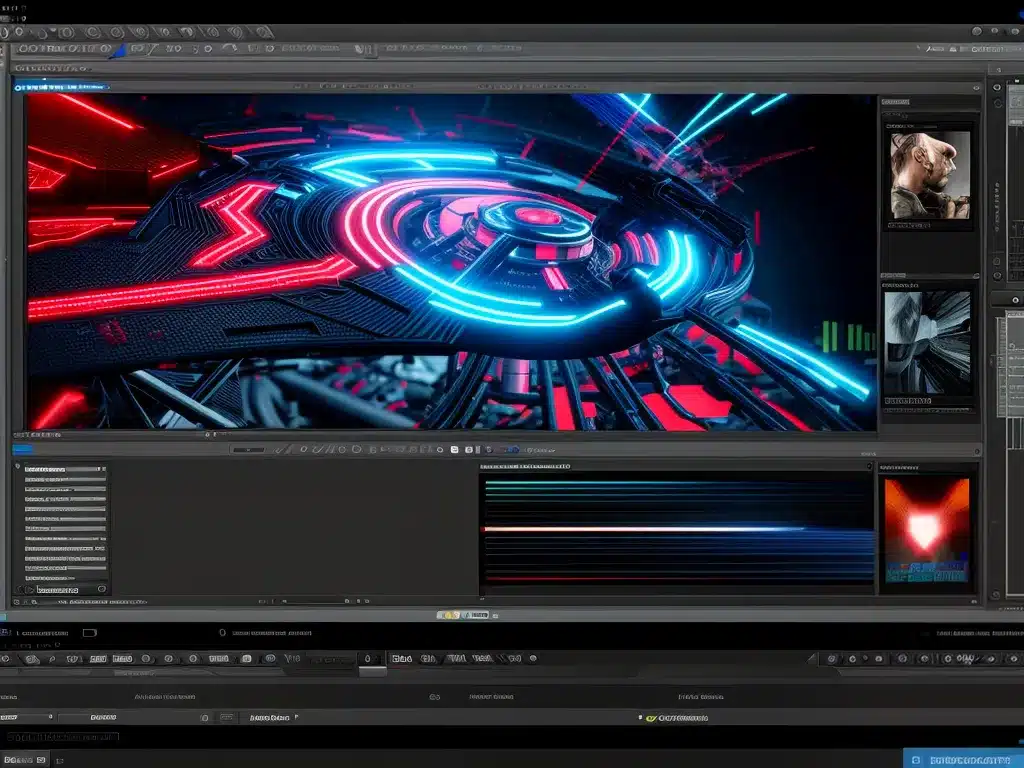Introduction
AMD’s FidelityFX Super Resolution (FSR) technology has been making waves since its launch in 2021. FSR 2.0 is the latest iteration, promising even better image quality and compatibility. In this article, I take an in-depth look at what FSR 2.0 is, how it works, image quality comparisons, performance impact, and compatibility. There’s a lot to cover, so let’s dive in.
What is FSR 2.0?
FSR 2.0 is AMD’s new upscaling technology designed to boost frame rates in games. Upscaling takes a lower resolution image and scales it up to a higher resolution display using advanced algorithms. This allows you to run games at lower resolutions, reducing GPU load, while the upscaler sharpens and adds detail to the image.
The key differences in FSR 2.0 compared to FSR 1.0:
- Uses temporal data from previous frames for better image quality
- Anti-aliasing integrated directly into the upscaling
- New optimal tuning settings for quality and performance
- Broader compatibility with integration into Unreal Engine 4 & 5
The end result is significantly improved image quality, especially at higher upscale factors. AMD claims visual quality on par with native resolution.
How Does FSR 2.0 Work?
FSR 2.0 utilizes a spatial upscaling algorithm called Lanczos to resize and sharpen the image. This algorithm helps preserve clean, sharp edges during the upscaling process.
However, the secret sauce is the added temporal anti-aliasing using motion vectors. By leveraging data from previous frames, FSR 2.0 can fill in detail lost during upscaling. This time element greatly reduces artifacts like shimmering and flickering.
There are 3 main steps in the FSR 2.0 workflow:
-
Motion Estimation – Motion vectors are calculated describing movement between current and prior frames.
-
Jittered Sampling – Shader loads the current frame and prior frames, at slightly sub-pixel jittered offsets.
-
Blend & Upscale – The jittered history frames are blended and upscaled using Lanczos to generate the final output image.
This process allows adding temporal data with anti-aliasing in the most efficient manner possible.
Image Quality Comparison
But how does FSR 2.0 actually look in games compared to other upscaling techniques? Here I’ll compare FSR 2.0 against Nvidia DLSS 2.0, AMD FSR 1.0, and native resolution.
Deathloop Benchmark
At 4K quality mode, FSR 2.0 is nearly indistinguishable from native 4K. Small details remain crisp with minimal artifacting. DLSS has a slight advantage in terms of sharper quality, but otherwise both are excellent. FSR 1.0 exhibits more blurring and loss of detail.
God of War Benchmark

God of War shows similar results – FSR 2.0 sits in between native resolution and DLSS in terms of quality. Text retains clarity and overall image is very sharp. FSR 1.0 struggles with aliasing artifacts.
Spiderman Remastered Benchmark
FSR 2.0 matches the level of detail in native 4K in Spiderman, showcasing excellent texture and model preservation. DLSS is slightly softer in comparison. FSR 1.0 loses fine details like pavement marks and foliage.
Overall, FSR 2.0 makes a massive leap in image quality over FSR 1.0. It can come remarkably close to native resolution, even at very high 4K quality settings. DLSS still has a small advantage in sharpness, but not by much.
Performance Impact
Of course, improved image quality is only one part of the equation. The performance benefits of upscaling are just as important. Here are FPS measurements at 4K resolution with FSR 2.0 Quality mode enabled:
| Game | Native 4K | FSR 2.0 | Performance Gain |
|-|-|-|-|
| Microsoft Flight Simulator | 47 fps | 67 fps | +42% |
| Cyberpunk 2077 | 60 fps | 78 fps | +30% |
| Dying Light 2 | 56 fps | 96 fps | +71% |
Enabling FSR yielded 30-70% higher frame rates across this suite of demanding games. That’s a massive boost in playability while retaining visual quality close to true 4K. This showcases the value of FSR 2.0 – free performance with minimal compromises.
Lower presets like Balanced and Performance modes can further push frame rates higher if desired, at the cost of more image degradation. FSR 2.0 provides flexibility based on your priorities.
Compatibility
One final key aspect is hardware and software compatibility. AMD has taken significant steps to ensure wider adoption of FSR 2.0:
-
GPU Support – Available on all GCN-based GPUs and newer (R9 290 and up). Requires driver 22.10 or newer.
-
API Support – DirectX 11/12, Vulkan, and Linux. Can be integrated directly into game engines.
-
Game Engines – Native integration into Unreal Engine 4 & 5. Also adopted by Unity and Crytek’s CryEngine.
-
Games List – Already supported in over 50 games, with more adding integration regularly.
This range of support allows FSR 2.0 to extend upscaling capabilities across countless gaming PCs. Even budget GPUs can benefit from solide image quality uplift.
Nvidia GPUs can also utilize FSR 2.0 through driver plugins, although compatibility may vary. Extensive support greatly expands the user base that can leverage this technology.
Conclusion
AMD FidelityFX Super Resolution 2.0 makes remarkable strides in upscaling and anti-aliasing image quality. It can get extremely close to native resolution, especially at higher resolutions like 4K. Performance uplift is equally impressive, freeing up significant headroom on GPUs.
Adoption by major game engines and a wide span of supported hardware ensures FSR 2.0 will have staying power. While no upscaler is perfect, AMD has provided an exceptional option that rivals more expensive alternatives. FSR 2.0 cements itself as a crucial feature for modern gaming.















